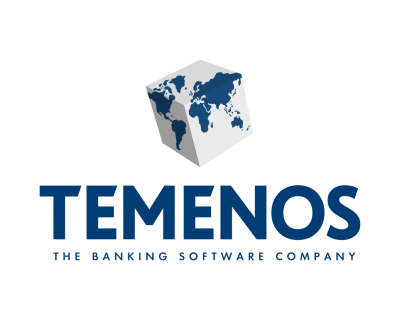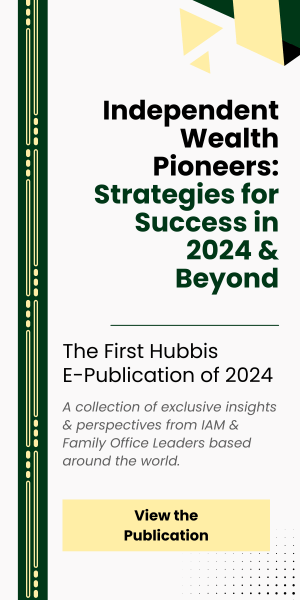Publications & Thought Leadership
Private Wealth Leaders in Asia – Positioning for Growth and in the Post-Pandemic World

Dec 17, 2021
We are almost at the end of 2021 and the pandemic rages on, even if there has been considerable progress in the vaccination programmes. And to look ahead, Hubbis assembled a panel of wealth management leaders working in Asia to review what has happened during 2021 and, more importantly, offer their views on 2022 and beyond and of course, how they are positioning their banks, their firms and their teams to seize the opportunities ahead and overcome the inevitable challenges and possible surprises around the corner. Our panel of experts offered their views set against the backdrop of seizing the growth potential that they all agreed is ahead in 2022 and beyond, as the world struggles to shake off the strictures of the global pandemic.

The Panel:
- Vincent Magnenat, Chief Executive Officer, Asia, Lombard Odier
- Carolyn Leng, Head, Private Wealth Malaysia, Group Wealth Management, Community Financial Services, Malaysia, Maybank
- Jean Paul Mergeai, President International Sales, Member of the Executive Committee, Temenos
- Michael Blake, CEO Wealth Management Asia, UBP

 These are some of the questions the panel addressed:
These are some of the questions the panel addressed:
- Has 2021 been a good year for wealth management in Asia, and if so, why?
- What growth potential lies ahead in 2022 and beyond, and where are the key opportunities for the foreseeable future?
- What are the key challenges for the year ahead?
- What is happening to the private client base in Asia, and how are clients’ needs and expectations changing?
- How are leaders in this industry enhancing their value proposition, products and service offering?
- Are they succeeding in becoming more client-centric, in boosting relevance, building more sustainable revenues and a more genuinely holistic offering?
- What role will the RM play in the post-pandemic world, and how will his/her relevance and productivity be enhanced?
- Are the private banks enslaved and hamstrung by compliance, or is the regulatory proliferation worldwide an opportunity to drive for professionalism in the industry rather than an impediment?
- Are the banks managing to boost their advisory and DPM income, thereby reducing the weighting of the ad hoc, product-selling type revenues?
- Where are they in their digital transformation journeys, and what are the next destinations ahead?
- How are banks and other firms able to win new clients in a world that still largely demands remote working practices and where travel remains significantly restricted?
- How can the wealth industry in Asia build lasting relationships with next-gen clients?
- More generally, how will the competitive arena evolve in the coming several years? Are the leaders ready for those challenges?
- Will there be an acceleration of consolidation in the industry?
- What is your vision for wealth management in Asia in a (hopefully) Post Covid-19 world?
Setting the Scene
There is no doubt that 2021 has produced another good year for the profits of the private banks and other wealth management leaders, as mainstream markets have continued to perform, as investors have diversified further into private and alternative assets, as more clients have been inclined to test out DPM, and as wealth estate and legacy planning have become more of a pressing need, and so too acquire the right life insurance products.
Digitisation has advanced further and faster than many might have anticipated, but there is still further to go on those particular journeys as the banks, and other firms position themselves for the future and younger generations of clients. Talent is a key priority for any competitors to be taken seriously in the wealth management markets, and not only do the leaders need to keep hiring the best in the market, but they also need to enhance training in order to develop skills and talent internally, and not just expertise in the products and solutions, but to also further encourage RMs and other team members to become even more client-centric, relevant, responsive and communicative.
This is especially important as clients seek a more holistic wealth management proposition and as key players seek to elevate their business models well beyond the transactional, even if at the same time they are boosting their platforms and their digital under-friendliness.
 The Panel’s Key Observations & Insights
The Panel’s Key Observations & Insights
A regional HNW survey helps guide banks through the world ahead with core findings on three areas – family longevity truly matters, investments must be professionalised, and sustainability is moving centre stage
A senior banker offered some key findings from a region-wide study they had organised this year, often working in partnership with local financial institutions across Asia with which the bank collaborates. The study covered three main topics - family wealth services, investments, and sustainability.
Regarding family wealth planning, he reported there had been more time at home to reflect and plan, to organise more robust wealth structuring, improve family and business governance, and generally prepare for a more uncertain future. Secondly, families are increasingly inclined to be globally mobile, and so too the family members are increasingly spread across the world for education, work, lifestyles and so forth. Singapore has been a major beneficiary, he noted, with the government schemes to attract private wealth and family offices.
Regarding investments, investors are concerned about volatility and surprise events such as Evergrande in China, so seek more advice from their bankers, meaning more of a shift from a very transactional approach, almost execution only to more of a discretionary and advisory approach.
And as to sustainability, there is more and more interest in following these avenues amongst clients of all ages, especially the younger generations. Indeed, more than 80% of those surveyed believe this is a very important topic to pursue, while some 50% of the participants also believe that investing in a sustainable way will generate superior returns in the future.
Onshore and offshore – both growing apace
A banker reported how the onshore wealth management offering across Asia was blossoming, but so too the offshore model at the same time. “The industry as a whole is growing,” he said, “and it remains an attractive industry to be in. We see a lot of growth coming from the onshore market, for example Thailand, as well as an increasing amount of movement between the onshore markets and the international markets, for example in our core bases of Hong Kong and Singapore over the next 10 years.”
How global regulation has helped drive the onshore wealth management model forward
A domestic banker explained that since CRS arrived, the local banks and onshore wealth management had risen in importance, as clients had become much more careful in terms of how they want to articulate their investments offshore as well as onshore. “We are able to garner more AUM onshore, and we are also able to work closer with clients to help them access offshore investments as well, in partnership with many of the leading product providers,” they reported. “So, if you ask me, I think the onshore private banking scene has significantly improved in comparison to the offshore banks, not at 100% competitiveness, but perhaps 75%. And we are now also offering wealth and estate planning, life insurance solutions, and a broad range of products and services that only the offshore banks offered before.”








But talent is a permanent bugbear that can impede the pace of evolution and growth
The same expert did however concede that demand for talent is at a high, but there continues to be a shortage, especially as Singapore and Hong tap into local expertise in markets such as Malaysia or Indonesia. Singapore is constantly tapping onto the onshore talent, so with the higher incomes available there, plus the stability and lifestyle on offer, it appears to be a no-brainer for many such talented RMs and other professionals, they added. But there are ways to train up private bankers from different disciplines within the onshore banks, or hire from outside the industry and train people in the best practices.
“But there is also the complete transformation required, for these people to become real private bankers,” they commented. “It takes time, dedication, discipline, and the desire to change. And in particular, we need to help them become bankers who listen to the clients first, who understand them, but who do not start pushing products. We have to overcome that mentality.”
Expert Opinion - Michael Blake, CEO Wealth Management Asia, UBP: “Two thirds of our growth over the past 5 years has come from Greater China and we expect that trend to continue. Hiring of Greater China senior relationship managers will be key, but so too will a targeted presence on the mainland. China WM is coming of age and there is a golden window of opportunity for international wealth managers to participate.”
The search for talent is also a constant issue in the offshore markets as well
Another banker agreed, commenting that the offshore markets suffer similar issues. The pool of bankers in Hong Kong and Singapore has not grown over the last two years, and indeed there had been people retiring from the industry, perhaps as a result of lifestyle priorities since the pandemic hit. He explained that their approach was to build talent where possible, but also to align in partnerships around the region in order to build reach and capability, thereby bridging the onshore and offshore offerings with a one-stop proposition for wealthy clients. “We will certainly continue to invest in the region, and we will invest in our three offices, such is the growth we anticipate ahead,” he reported.
He added that technology certainly also enhances the productivity and capabilities of existing talent, and helps thereby attract and retain better quality people. Moreover, the culture of consistency and quality are endearing qualities for talented bankers and advisors.
Talent – gradually drawing the best towards independent banks from a deep pool
A guest reported and agreed with the consensus view that talent was tough to identify and attract and that competition, which had always been fierce, had intensified.
“But we ourselves are not looking for many people,” he said, “we are looking for only a number of individuals, those with real experience of 10 to 20 years and who want to come into a bank where they can run their own book, build their own businesses within. Others are more interested in an organisation that allows them to express themselves, that is not so hierarchical, and where they can really put their best foot forward for their clients. We are patient, we have many such conversations, and sometimes they come to fruition, sometimes it takes more time. But we stick to our focus of quality over quantity in order to maintain our standards and culture.”
He also noted that there is a trend towards some natural hiring from other parts of the finance industry as well. “You’ll see more very successful private bankers who started out life as corporate bankers and at some stage investment bankers,” he explained. “You will see them attracted to our wealth industry as it is fundamentally attractive for those experienced bankers, albeit from different disciplines, where they can express their skills from a personal perspective and also from a professional perspective.”
He added that he is therefore not only interviewing private bankers, but also talking to those other bankers, as well as investment consultants, investment advisors, people who've worked in family offices, people who have experience in the growing private markets space. “There is a very broad talent pool and there is no shortage of candidates, quite the opposite actually, but it just comes down to the right fit for both parties,” he concluded.
Advice is central to the private bank offering today, nowhere more so than in the field of estate and legacy planning
In an increasingly complex and also uncertain world ahead, the quality, range and accessibility of advice is ever more central to the private bank proposition, and no more so than in the field of family wealth, estate and legacy planning. “We are in a region where most of the entrepreneurs except in Singapore, Hong Kong and Japan are the first and second generations,” a banker observed. “This is why it is so important to ensure that the right business governance, the family structures and governance, the legacy and succession planning, are all in place and robust. To achieve that requires an individual and bespoke approach for each clients. There is no fixed formula, it is all about understanding the clients and their families and then proposing the right solutions.” He added that private banks that have been advancing for many generations in their business evolution have that deeper empathy and perhaps an elevated ability to take the long-term view on being those clients’ trusted partner.
DPM – on the rise as clients seek more guidance in face of greater uncertainty
Another expert agreed, adding that questions had increased, and market optimism decreased, due to a more uncertain environment, questions around inflation, around central bank tapering, and of course increased volatility due to the course of the virus, and that there was genuine concern about public market returns ahead. The result, he explained, is that clients have turned increasingly turned to their bankers for more advice and had passed over more of their funds to the professional for discretionary portfolio management services. Additionally, clients have been migrating more of their money to private assets and increasing percentages to thematic funds and opportunities, with the new economy theme continuing in strong demand, aiming to capture key growth sectors in the global economy.
In broader terms, he reported that the bank had been building each of these proposition areas for a number of years now, with double the number of clients today invested in DPM compared to a year ago, and with a highly encouraging trajectory we are on.”
Differentiation – financial stability and platform strength counts much more than before
A guest told delegates that differentiation centres on their bankers. “We are a banker’s bank,” he said. “What I mean by that is that our clients are looking for a long-term advisor, and we are very comfortable with that philosophically. We believe in building the business around that relationship.” He added that the strength and stability of the platform is important, commenting that the bank’s financial strength and resilience is no longer a hygiene factor as it was perhaps 10 years ago; clients want to understand the Tier 1 capital ratio and make sure they are working with a bank that offers liquidity and that will be there in difficult times as well as in good times.
Customised investment strategies and private markets – core to the successful private bank proposition of today
A banker observed that time and again they see that clients are looking for a customised investment strategy. “And while everybody says they offer that,” he said, “it's much easier to say it than actually put it in practice day after day after day, so we are obsessive about delivering that unique investment approach.”
Aside from building DPM and specialised advisory and thematic offerings, this same expert reported that private markets, the latter now including pre-IPO investment opportunities in addition to longer-term real estate opportunities, and also private debt, and is now building more private equity capability. “So, DPM, as I explained, has enjoyed real growth, and private markets for us has become an extremely important part of the proposition.”
 The Hubbis Post-Event Survey
The Hubbis Post-Event Survey
What are the biggest challenges ahead for private banks and wealth management firms in Asia, and briefly why?
- Regulation, recruitment and rise of FinTech are the three biggest challengers for the private banking industry.
- As data breaches become prevalent and privacy concerns intensify, regulation and compliance requirements become more restrictive as a result. And, if all of that wasn’t enough, customer demands are evolving as consumers seek round-the-clock personalised service.
- The emergence of FinTech/non-bank start-ups is changing the competitive landscape in financial services, forcing traditional institutions to rethink the way they do business.
- Moving beyond the founder clients, and tapping into second and third generations of families as part of legacy planning.
- The pandemic!
- Very tough to find the right talent to help us build at the pace we would like.
- Keeping pace with new technologies.
- Lack of face-to-face meetings and no end in sight to virtual connectivity.
- Covid really. The outlook is still unknown for the next one year at least.
- Regulations, more regulations and more regulations…
- The rise of successful IAMs/EAMs is eating into the private bank business.
- No travel makes it extremely tough to build new clients.
- Quite a high percentage of the prospective clients in this region are not very financially sophisticated. It will take quite a few years to get them up the curve. To a degree, staff working in the financial industries are not all they should be. There are still many countries with weak financial regulations that still allow dubious priorities to continue (capital protected products in Indonesia, Investment linked sales throughout most of Asia, and so forth).
- Trying to achieve and then communicate differentiation.
- Unpredictability of revenues and difficulties in elevating the recurring revenues to achieve real stability.
Expert Opinion - Michael Blake, CEO Wealth Management Asia, UBP: “We see a hybrid future, where technology enables richer conversations with clients. Philosophically, we are a banker’s bank and whilst tech can enhance investment insights, it cannot replace the human connection that lies at the heart of every successful client relationship.”
Impetus towards digitisation continues as wealth management incumbents eye competitive advantages
A guest observed how the pandemic had crystallised the need for advice, communication and delivery of products and services, and to achieve that the banks and other providers need to have a holistic technology system and processes that can serve front office relationship managers, but also the rest of the bank or firm. The drive to ESG was also driving the need for rich digital features, such as powerful constraint engines, and screening capabilities, not just to make managing ESG compliance and investment easy, but also to automate much of the process. He explained that they see increasing demand for sophisticated solutions from the incumbents and also the new entrants and disruptors.
Digital solutions that offer a holistic set of capabilities are most in demand
The same expert reported that clients in markets across the region are not really that interested in piecemeal solutions, but want to benefit from a seamlessly integrated set of capabilities, ranging from your compelling and very comprehensive set of functions in the front office, but that are also seamlessly integrated with their middle and back office solutions.
“And they realise that now is the time to invest, and that investing in technology could actually help them leapfrog some of their local domestic competitors,” he reported. “The markets in this region have great potential and they are full of younger people and rising numbers of mass affluent clients who have investment needs and who are digitally savvy, and they want to take advantage of the new digital platforms that we offer to our clients. Accordingly, digital transformation and across the board productivity improvements are in great demand.”
Another key mission for many in the wealth industry is to drive their data storage and management to the cloud, bypassing or replacing aging core infrastructure, and to make them more scalable, more flexible, to leverage the benefits of artificial intelligence, and machine learning, in order to make the most of the data so many banks and firms possess.
Digital evolution with human skills at the core for the higher end of private banking
As to digital transformation, a guest explained that discussions around technology are today much more nuanced and granular. “Five years or so ago, it was presented more as a zero-sum game, either as digital or human, but it has evolved into the hybrid model where technology enables richer conversations with clients,” he observed. “And that may be through digital communication channels, it may be through AI assisted insights and investment portfolios, it may be just purely in terms of taking out some of the pain factors in the way that clients interact with their bank and conduct their KYC. That is for HNWIs and above, which is our business.”
But he added that perhaps for the mass affluent wealth business, there's a much stronger argument go for a lower touch but higher volume model, which is largely digitally driven. “I think, for pure private bank players like ourselves, human interaction remains the core around which we build, so we see technology as an enabler, boosting our proposition, enhancing the human capabilities and delivery.”
Expert Opinion - Michael Blake, CEO Wealth Management Asia, UBP: “2021 was a year which reinforced the importance of active management and this trend will continue in 2022. Clients are now looking beyond the V-shaped recovery and are asking questions about tapering, inflation, volatility and the potential for lower public market returns as the economic cycle normalises. A major positive for us is that now one-third of UBP Asia clients currently have exposure to DPM, double that of a year earlier.”
The Hubbis Post-Event Survey
In a post-pandemic world, are the major private banks at a greater competitive advantage or the IAMs/EAMs, or the new entrants/disruptors, and briefly, why?
- Yes, major private banks have better networks and support for staff and clients, and can weather more storms more robustly.
- Both have their strengths, and both have their positions in what has been and will be a growth market in Asia. There is room for all/more.
- The private banks are particularly well placed for private market assets and more and more clients are shifting their holdings towards those classes, away from regular equities or traditional investments.
- Major banks will still have the upper advantage as they have the brands and the global reach.
- IAMs and new entrants/disruptors will continue to expand, but this is fine as the market continues to grow.
- The smaller players will nibble away at the margins, as they are adaptable and have differentiation, but the major business will remain with the major banks.
- We think the IAM/EAMs will do fine, but not in any way threaten the supremacy of the private banking model, which spans global, boutique and regional/local, all of which have been boosting their capabilities and client-centricity.
- The banks can afford more technology to keep ahead of the game, but they tend to move a bit slower, due to the decision-making layers.
- The PBs generally have the branding, infrastructure and trust of the clients, and are there in case of major problems as well.
- EAMs have greater flexibility and adaptability, so for those clients who are seeking individuality and who are brave and confident in their choices, the independents will do well. But there is plenty of room for everyone to compete.
- The cost of servicing clients is still very challenging for all concerned. EAMs cannot build extensive online infrastructure to enable online business due to the cost. So, the approach of EAMs generally has to be more personal with greater human interaction, as they have little choice. Banks continue to promote themselves as the personal tailored approach, but in reality, they are trying to move as much client interface online as possible. So, for more mass market type relationships, banks have the advantage. However, by winning that race they will also alienate some of their wealthier clients that still want a more personable approach.
- The younger generation clients want the most efficient technology and ease of delivery, so they will tend more towards the private banks. have their competitive advantage, so they will both thrive for different reasons, but there is room for all, we believe, due to rising numbers of wealthy in Asia and rising per capita wealth.
- The UHNW and HNW segments offer good potential for all, as there are more and more of them, and products and solutions are necessarily increasingly sophisticated and cross-border. But the rising ranks of mass affluent clients means that the local and regional banks are well placed to benefit.
Next – China, a massive wealth market beckons, but choosing the right entry strategy is the key
A banker explained that they were also expanding their geographic lens, and like many other private banks working out how to access China, which he described as a golden window of opportunity. “This is the right time for us to really start thinking seriously about how to get more exposure to Mainland Chinese wealth, which represents perhaps 60% of the wealth pool today in Asia,” he explained. “This is timely, as there are some really interesting and accommodating changes in terms of regulation that make it much easier for international wealth managers to establish agile businesses on the mainland and start to provide a service that's meaningful for Mainland Chinese clients. So, that for me is a key priority next year, we'll be spending a lot of time on that.”
Key priorities for the year ahead – boosting the proposition
A guest reported that curating a more sophisticated and relevant array of products and solutions was core to the mission for 2022 and beyond. Talent acquisition, retention and enhancement is vital to achieve any of the goals for clients, in order to provide them with a genuinely holistic approach to their wealth management needs, and to their wealth, estate and legacy planning.
Expert Opinion - Michael Blake, CEO Wealth Management Asia, UBP: “We see significant opportunities emerging in new thematic investment strategies that will continue to shape the markets over the long-term. Reflecting this, we have appointed two senior analysts, covering Asia Technology and Healthcare. We are also adding further senior specialists to provide our clients with high conviction investment opportunities.”
The final word – help clients be prepared for whatever comes next, as best as possible
Their final word was that 2022 should be another exciting year for wealth management in the region, even if travel and other restrictions persist. “To take advantage of the opportunities, we need to truly focus on better client engagement and interaction,” they stated. “The clients will be reassured and ready for more volatility, which I think likely, or whatever comes next, including the persistence of the pandemic, as this virus mutates. We need to be prepared, and position ourselves for all these eventualities, and make sure we help our clients position themselves appropriately.”








